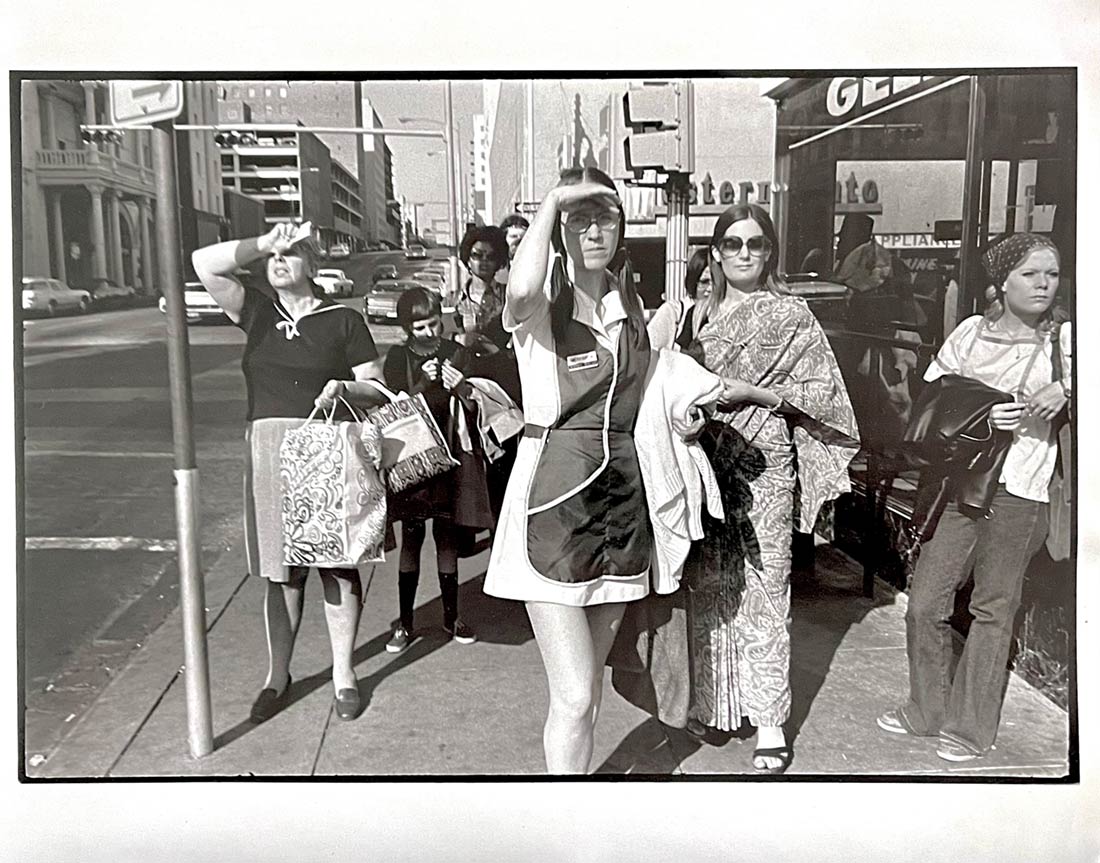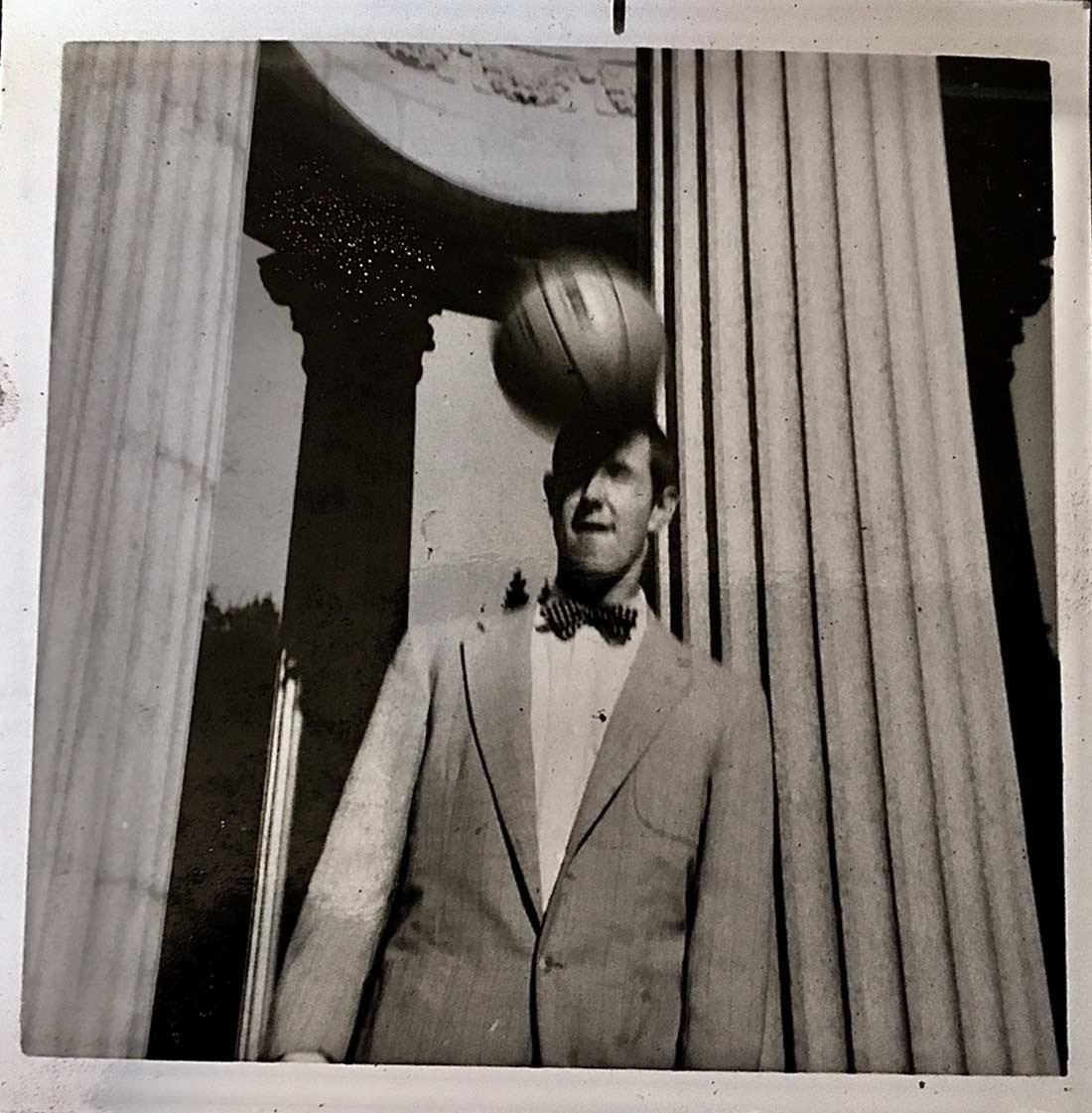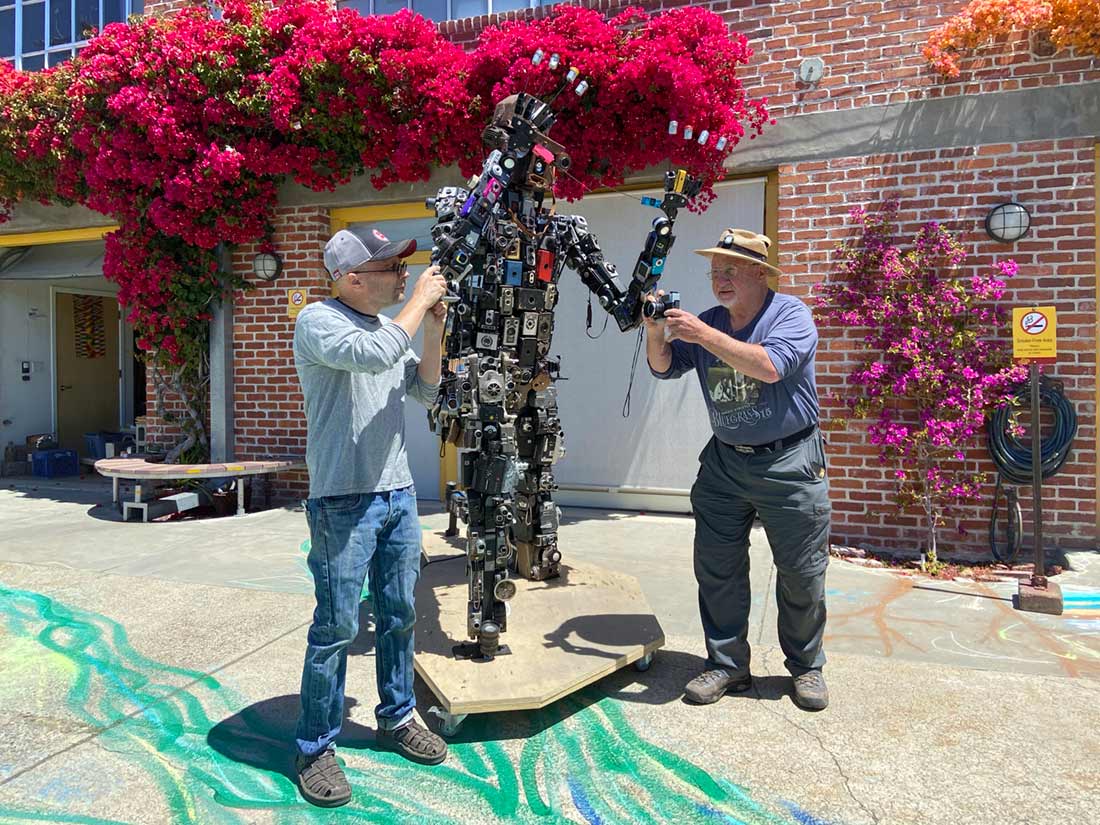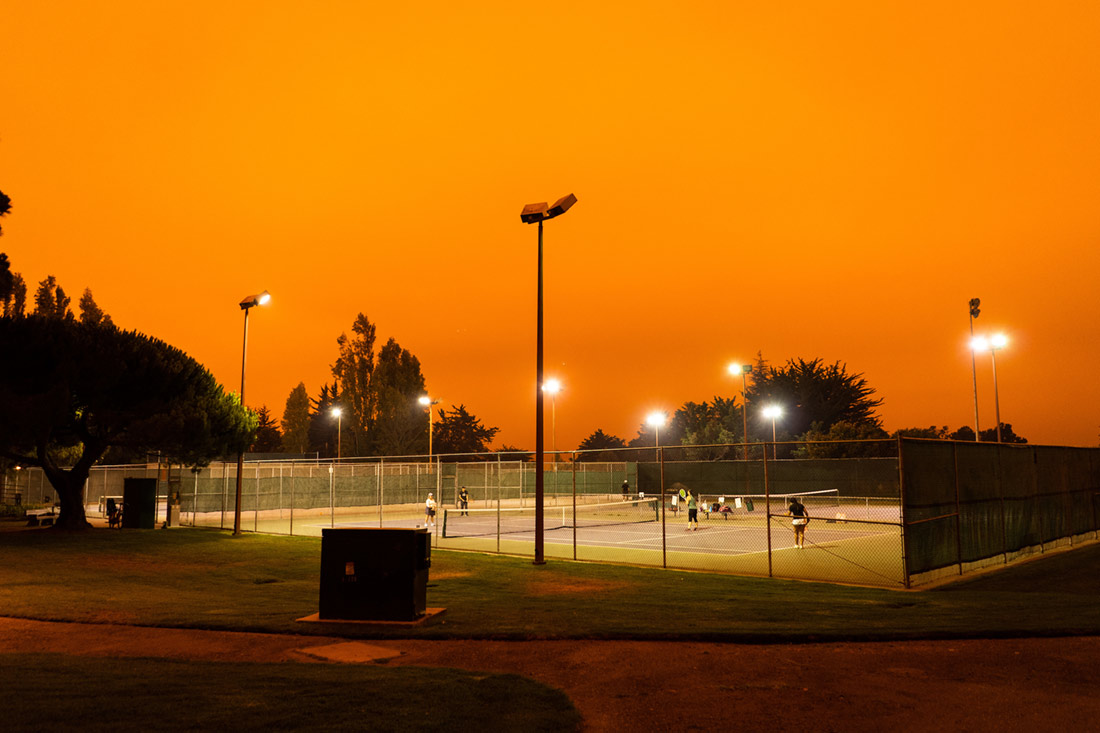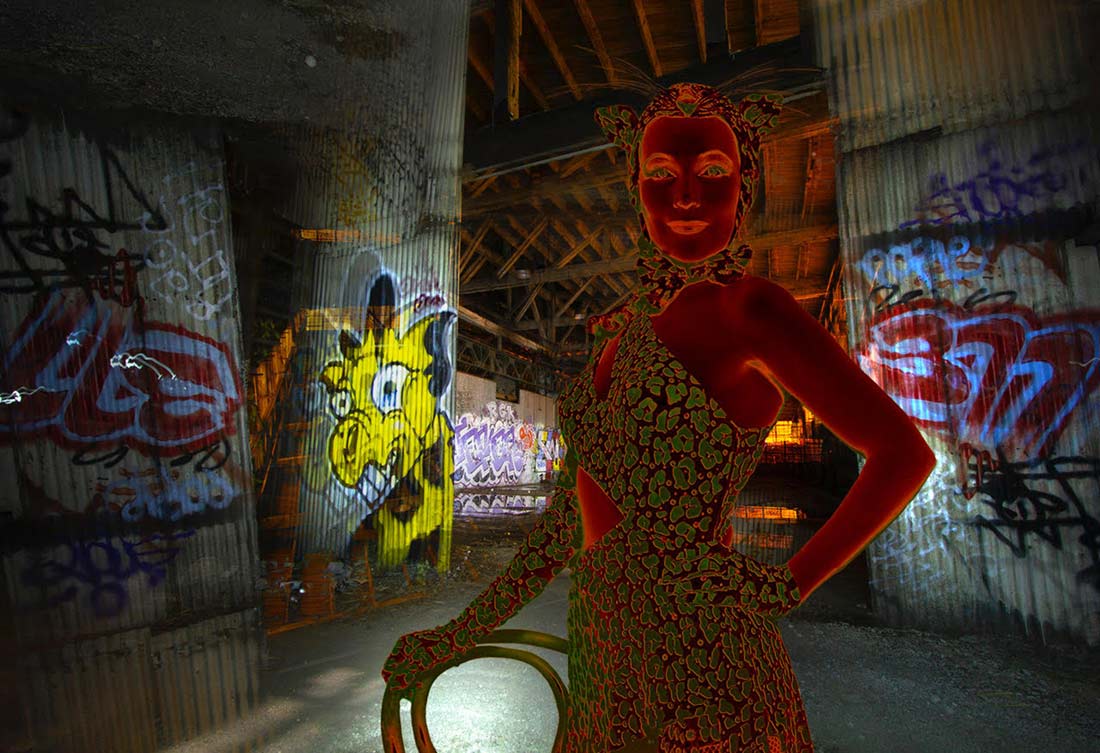K Gallery at Rhythmix Cultural Works Presents:
Cameraman
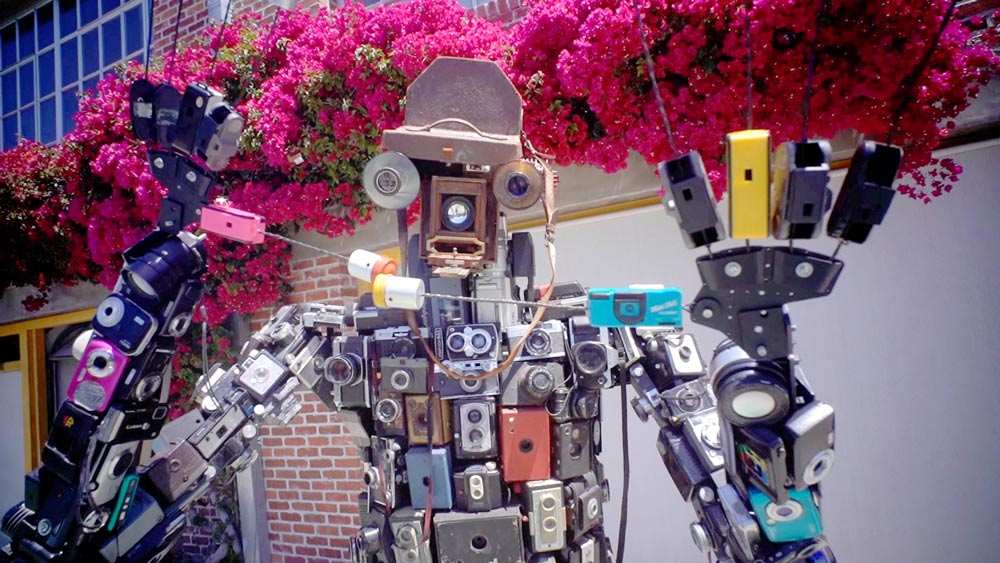
View photos from the exhibit.
Four photographers with four different approaches to capturing a moment in time. Motion Picture Camera Operator, Mitch Dubin tells a story within the four lines of the frame. Actor, Ed Holmes seeks the surprise of mistakes. Photojournalist, Maurice Ramirez documents a city during the pandemic. Artist, Pons Maar’s collages combine abandoned places with a Hollywood of days gone by.
Cameraman also features a sculptural collaboration between artists Ed Holmes and Marc Ribaud with sound design by Joe Paulino and Cameradog by Maria Chenut.
The idea for this show began when Holmes and Ribaud decided to create a larger than life size “Cameraman” using Ed’s 45 year-old camera collection and Marc’s engineering genius. The hundreds of cameras date from the 1920’s to yesterday, from a 4×5 view camera to plastic toy cameras and everything in between. The artists responded to the unique beauty of each camera design. A red box camera becomes the heart, two 1940’s film strip projectors become the eyes, and a series of instamatic cameras become the spine. Recorded shutter sounds create a sonic atmosphere and camera cases form Cameraman’s best friend, Cameradog.
To view all the works in the Cameraman exhibit, please visit the K Gallery at Rhythmix in person.
Exhibit: July 3rd – October 31st.
Click on artwork below to view more and learn about each artists. To purchase artwork, contact info@rhythmix.org
Maria Chenut
Maria Chenut loves working with found objects and textiles, creating sculptures and costumes. She teaches sewing, helps lead the Upcycle Alameda group, and just opened a vintage shop called Moodswing on Encinal Ave.
Joe Paulino
I used to drive a car with the license plate ODDIO 1. Oddio – to me – meant “strange sound”. Only two people I knew besides me got that, and they’re both great engineers with big ears.
I was a child who spent his formative years force-fed a diet of Lawrence Welk, The King Family, Ray Conniff, Andy Williams, Mitch Miller and the music I danced to in tap class. Strange sound did not come easily to me, and I will always be grateful to all those who cared enough to open my ears to its possibilities – both as a listener to, and as a creator of.
Ed is certainly one of those people, and when he asked me to work on the oddiotic aspect of Cameraman, I went to yes without hesitation. I really wanted to do justice to the initial source recordings he presented me with, and I felt that the best way to do that was to toss them into a series convoluted, needlessly complex, unrepeatable and vaguely stated strategies that may have once made some sort of sense to me, but now do not.
Each of these cameras and projectors has something to say. When I began to hear them together, they were interacting with each other like flocks of mechanical birds. But then I also heard in them the melodies of us – declaring, asking, mocking, challenging, revealing, apologizing, sharing memories, repeating ourselves. Clicking. Whirring. And always moving. These sounds are from the parts that make up the whole of Cameraman. In their stories, we will hear parts of our own.
